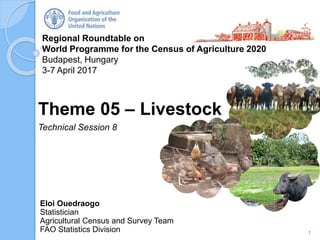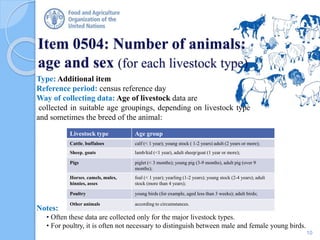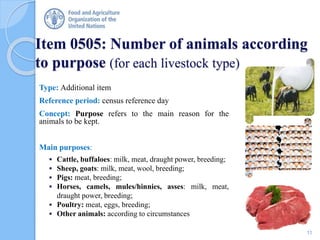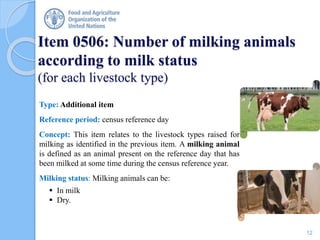The document summarizes key concepts and methodology for collecting livestock statistics through agricultural censuses. It discusses defining livestock and livestock farming, the importance of livestock statistics, and recommended items to collect, including the number and characteristics of animals by type, births/acquisitions/deaths, purposes, feeding, and veterinary services. Country experiences are also briefly mentioned, such as recording livestock numbers as of a reference date and distinguishing owned/non-owned/communally grazed animals.

















